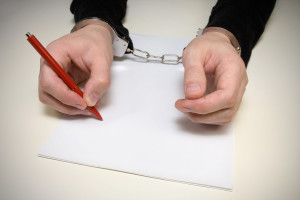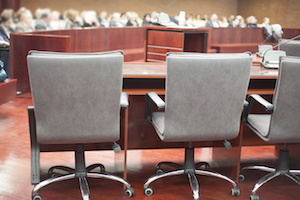A high profile murder case of a former University of Pittsburgh medical researcher who is accused of poisoning his wife will feature opposing expert witnesses who will debate the circumstances of the case. Dr. Robert Ferrante will be tried for the April 2013 death of his wife who he allegedly killed with cyanide, and, with medical evidence key to the outcome, the trial figures to be a battle of expert testimony.
Medical Researcher Accused of Cyanide Poisoning
Dr. Ferrante is charged with killing Autumn Marie Klein, his 41-year-old wife who was carving a path for herself as a leader in the field of neurology and obstetrics, by administering a fatal dose of cyanide mixed into an energy drink. Dr. Klein collapsed in her home on April 17th, 2013, from an apparent stroke, but further investigation by police and medical examiners uncovered evidence that suggested her death was not accidental.
Upon being transported to a local hospital, the treating doctors noticed Dr. Klein’s blood was bright red, which is consistent with the fatal effects of cyanide poisoning. With blood tests raising suspicions, police were keyed to Dr. Ferrante when it was revealed that he made a purchase of over 1 pound of cyanide with his University of Pittsburgh research account – an unusual transaction for someone in Ferrante’s position.
Between the blood tests and the unusual cyanide purchase, police connected the dots to Ferrante, and arrested him in July of 2013 while he was traveling home from a conference in Florida.
Prosecutors Look to Medical Experts to Point to Cyanide Poisoning
Prosecutors have summoned several expert witnesses to comment on the presence of cyanide in Dr. Klein’s blood, and whether or not Dr. Ferrante, who is a leading researcher on ALS at University of Pittsburgh, would have any reason to use the toxin during the course of his work. The crux of the prosecution’s case will center on connecting the cyanide in Dr. Klein’s blood to: 1) the cause of her death, and 2) Dr. Ferrante.
In addition to the blood tests conducted at the hospital where Dr. Klein was admitted, prosecutors will call toxicology expert witness Christopher Holstege who plans to narrate a presentation examining the sound of Dr. Klein gasping for air in the background of Ferrante’s 911 call. Holstege’s expert testimony will connect the noises Dr. Klein made while fighting for life with the sound of someone suffering from cyanide poisoning. Other experts will be used to tell jurors that Dr. Ferrante’s work did not require cyanide toxin, helping prosecutors connect the dots from Ferrante’s behavior to Klein’s unexpected death.
Defense Strategy Relies on Expert Witnesses
Although the defense team representing Dr. Ferrante has not made public a strategy to respond to the allegations against him, given the medical evidence mounting, the defense will need to look to expert witnesses for assistance. Law professor John Burkoff, who has become an expert on the Ferrante case, told the Associated Press, “If the defense doesn’t have some credible medical evidence to dispute the prosecution’s evidence, they’re in pretty bad shape. The biggest thing that makes me curious is what expert testimony the defense will have on the cyanide evidence. If you find there’s a substantial amount of cyanide in her system, and that he had access to cyanide, well, that’s pretty much it.”
With the need for medical expert witnesses dramatic, Ferrante’s defense team has turned to renowned forensic pathologist, Cyril Wecht. Dr. Wecht is the 83-year-old former Allegheny County coroner who has consulted on examination of famous deaths including those of Elvis Presley and JonBenet Ramsey. Although what Dr. Wecht plans to say during his expert testimony has not yet been revealed, his presence in the case lends credibility to Ferrante’s efforts to defend himself against the murder charge.
The Ferrante murder trial opens this week, and is expected to carry on for at least a month as both sides hammer it out with physical evidence and medical expert witness testimony.











